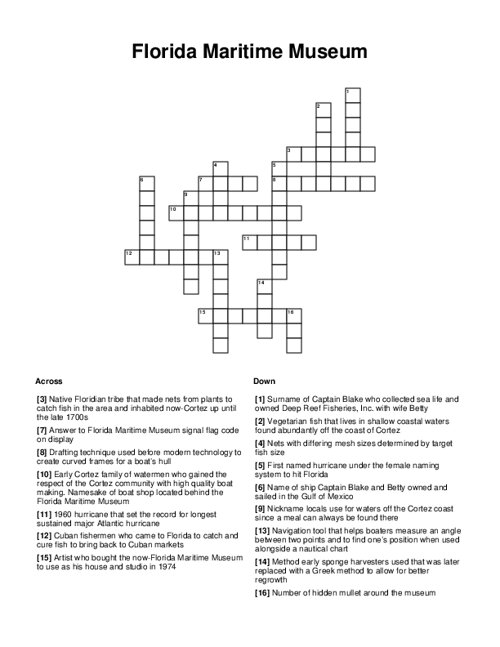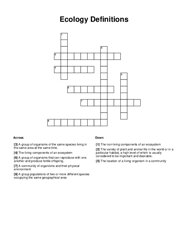Florida Maritime Museum Crossword Puzzle
QUESTIONS LIST: school house: florida maritime museum building’s former use (hint: original 1912 use) , hook: method early sponge harvesters used that was later replaced with a greek method to allow for better regrowth , mullet: vegetarian fish that lives in shallow coastal waters found abundantly off the coast of cortez, kitchen: nickname locals use for waters off the cortez coast since a meal can always be found there, skiff: type of shallow open boat that is on display showcasing various construction types (examples: gillnet, sprits’l, etc.), calusa: native floridian tribe that made nets from plants to catch fish in the area and inhabited now-cortez up until the late 1700s, ranchos: cuban fishermen who came to florida to catch and cure fish to bring back to cuban markets , lofting: drafting technique used before modern technology to create curved frames for a boat’s hull, pillsbury: early cortez family of watermen who gained the respect of the cortez community with high quality boat making. namesake of boat shop located behind the florida maritime museum, gill: nets with differing mesh sizes determined by target fish size, sextant: navigation tool that helps boaters measure an angle between two points and to find one’s position when used alongside a nautical chart , wink: answer to florida maritime museum signal flag code on display , donna: 1960 hurricane that set the record for longest sustained major atlantic hurricane, florence: first named hurricane under the female naming system to hit florida, sailors: artist who bought the now-florida maritime museum to use as his house and studio in 1974, six: number of hidden mullet around the museum , banks: surname of captain blake who collected sea life and owned deep reef fisheries, inc. with wife betty, medusa: name of ship captain blake and betty owned and sailed in the gulf of mexico, mangroves: tropical trees found in salty, coastal waters that store large amounts of carbon and provide a habitat for marine life. (hint: 3 of the 50-70 known species are found in florida)






